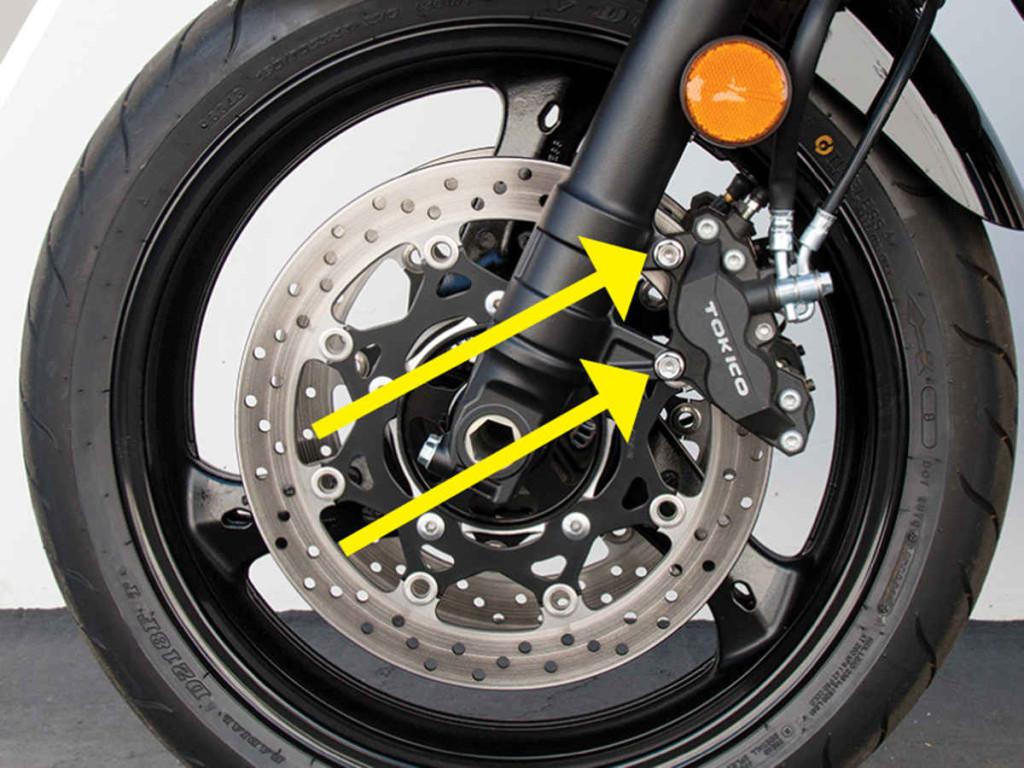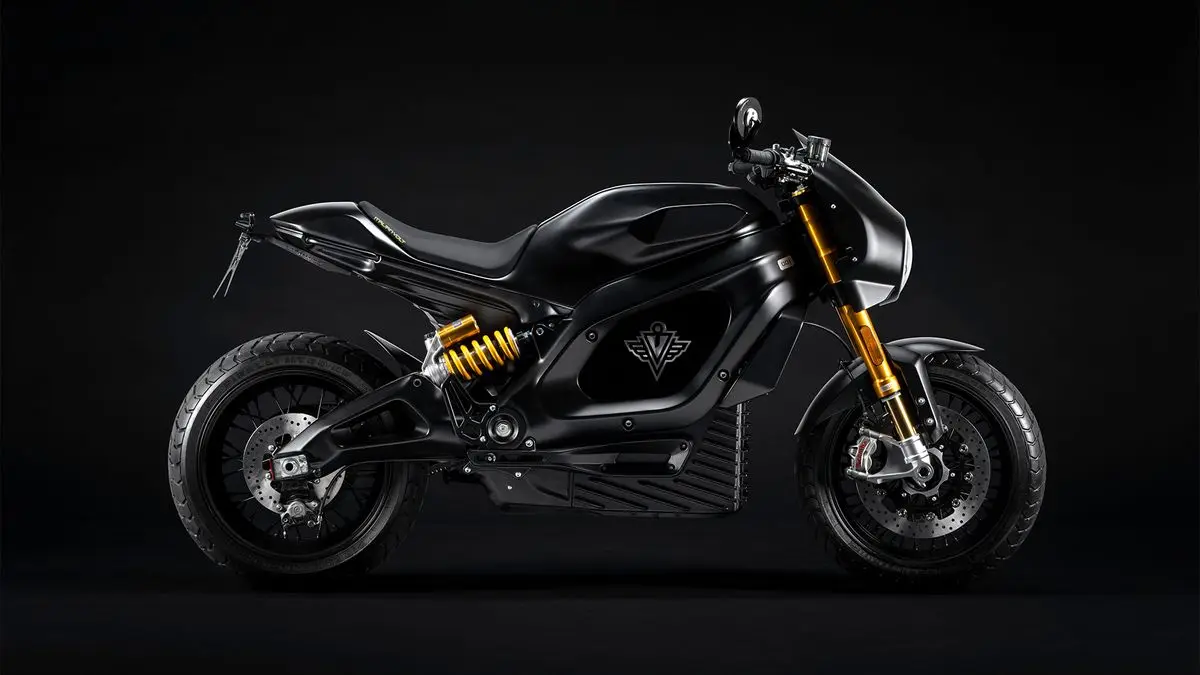I. The Mysterious Structure and Principle of Motorcycle Brake System
(I) Brake Disc: The Guardian of High-Speed Rotation
The motorcycle brake disc, often referred to as a rotor, is like a circular “shield”, typically crafted from stainless steel or alloy. Its diameter, which varies with different motorcycle models, generally ranges from 240mm to 320mm. The rotor is adorned with ventilation slots or cooling fins. These fins, which occupy approximately 20% – 30% of the rotor’s surface area, play a crucial role in dissipating heat rapidly. When braking, the rotor spins at high speed along with the wheel and engages in intense friction with the brake pads, converting the wheel’s rotational kinetic energy into heat energy for dissipation.
(II) Brake Pads: The Key Role in Friction and Heat Generation
Brake pads consist of friction materials and metal backplates. Common friction material types include semi-metallic, organic, and ceramic. The semi-metallic brake pads have a friction coefficient typically within the range of 0.35 – 0.45 and can withstand temperatures up to 300℃ – 400℃. Organic brake pads have a friction coefficient around 0.3 – 0.35 and a heat resistance temperature of 200℃ – 250℃. Ceramic brake pads, renowned for their excellent performance, boast a friction coefficient of 0.4 – 0.5 and a heat resistance temperature exceeding 600℃. The metal backplate not only provides structural support but also aids in heat dissipation. During braking, the brake pads clamp firmly against the rotor, generating friction to decelerate the wheel.
(III) Brake Caliper: The Promoter of Braking Force
Brake calipers can be classified as floating or fixed. A floating caliper usually houses 2 – 4 pistons, with each piston having a diameter approximately between 30mm – 40mm. It has the ability to self-adjust the position of the brake pads according to the rotor’s condition, ensuring uniform frictional force. The fixed caliper, renowned for its higher rigidity, is commonly utilized in high-performance motorcycles. The pistons within the caliper, under the hydraulic pressure of the brake fluid, thrust the brake pads like miniature rams, generating substantial braking force.
(IV) Brake Pump: The Creator of Pressure
- Brake master cylinder (upper brake pump)
- It serves as the origin of pressure in the entire brake system. The master cylinder’s bore diameter commonly lies within the range of 14mm – 16mm, and the piston diameter is 10mm – 12mm. When we actuate the brake lever, the piston inside the master cylinder displaces and compresses the brake fluid. Based on the lever principle, the brake lever’s travel typically spans from 20mm – 30mm, controlling the pressure output of the brake fluid.
- Brake slave cylinder (lower brake pump)
- The slave cylinder receives the pressure from the master cylinder and precisely relays it to the caliper pistons. The working pressure of the slave cylinder, contingent on the motorcycle model and brake system design, generally ranges from 5MPa – 10MPa.
(V) Brake Fluid: The Messenger of Force Transmission
Brake fluid comes in varieties such as DOT3, DOT4, and DOT5. DOT4 brake fluid, for instance, has a dry boiling point typically above 230℃ and a wet boiling point above 140℃, exhibiting excellent high-temperature stability and resistance to moisture absorption. It is responsible for transmitting the pressure generated by the master cylinder to each component of the brake system, including the slave cylinders and calipers, ensuring the accurate conveyance of braking force to the brake pads.

II. The Secret Maintenance Guide for Motorcycle Brake System Revealed
(I) Brake Pad Maintenance
- Inspection frequency
- Every 1000 – 1500 kilometers ridden, it is essential to inspect the thickness of the brake pads. A specialized brake pad thickness gauge can be employed. When the remaining thickness of the brake pads is less than 2mm, replacement is mandatory.
- Cleaning points
- Approximately every 500 kilometers, utilize compressed air (with a pressure between 0.3MPa – 0.5MPa) to expel dust and debris from the surface of the brake pads. If oil contaminants are detected on the brake pads, promptly use a dedicated brake cleaner for thorough cleansing and then dry with a clean non-woven fabric.
(II) Brake Disc Maintenance
- Surface cleaning cycle
- Every 500 kilometers of travel, wipe the rotor surface with a clean, soft cloth. Every 3000 kilometers, employ a specialized brake disc cleaner for in-depth cleaning to eliminate rust and oil deposits on the surface.
- Flatness inspection
- Every 10,000 kilometers traveled, utilize a dial indicator to assess the flatness of the brake disc. The flatness tolerance should be maintained within 0.05mm. If the deviation exceeds this limit, rotor resurfacing or replacement may be necessary.
(III) Brake Caliper Maintenance
- Piston maintenance
- Every 6 months or 5000 kilometers traveled, disassemble the caliper and clean the piston surface using a specialized brake piston cleaner. After cleaning, apply a minimal amount of high-temperature resistant silicone grease (with a working temperature range of -40℃ – 200℃) to the piston seal ring, and then carefully retract the piston back into the caliper.
- Caliper appearance inspection
- Prior to each ride, scrutinize the caliper for any signs of damage or deformation. Every 2 years or 20,000 kilometers traveled, conduct a comprehensive inspection of the caliper, including tests for structural integrity and sealing performance.
(IV) Brake Pump Maintenance
- Brake fluid replacement
- Every 1 – 2 years or 5000 – 10,000 kilometers traveled, replace the brake fluid. During the replacement process, first drain all the old fluid, then flush the brake system lines with new brake fluid, and finally introduce an appropriate quantity of fresh brake fluid. The volume of brake fluid required varies by motorcycle model, generally falling within the range of 100ml – 200ml.
- Pump body inspection
- Every 3 months or 3000 kilometers traveled, check the sealing integrity of the brake pump. Initial assessment can be made by observing the return behavior of the brake lever or pedal. If the return is sluggish or there is any obstruction, the piston and seal ring within the pump body should be inspected promptly.
By comprehensively understanding the structure and principle of the motorcycle brake system and adhering meticulously to the maintenance procedures, we can ensure the motorcycle brake system remains in optimal condition, safeguarding our riding safety. Whether traversing urban thoroughfares or speeding along mountain trails, a reliable brake system is our most dependable ally. Let’s meticulously care for the motorcycle brake system and relish every secure and exhilarating riding journey.

